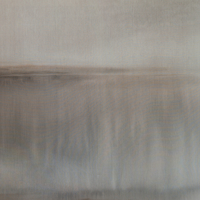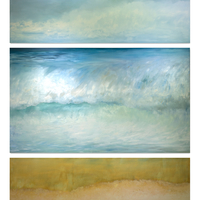Elizabet Cerviño finds disturbing the world’s ephemeral and always changing character. It could be said that her position before death is described between terror and seduction, for when it comes to her oeuvre, it is always the dignity of mortality the reason for so many artistic fineries. She insists once and once again on it, and she represents it as a process of life, deterioration, unstoppable corruption or natural state. Her artworks precede invariably the absolute fatal cessation, as the most algid moment of human existence.
But mortality carries with it a slight persistence in resignation. The beings that inhabit her visual attempts wait for the right moment, they twist in a shell of serenity, of false serenity. Therefore, doubts come: is it human finiteness itself, and the traumas it generates, or it is the agony before an announced death, selected as a metaphorical figure to allude to the race of mute lambs that make up our society?
On the other hand, we will always find her resolute in a delicate idiolect, expressively condensed, in which matter appears in an enormous and erotic state. She is tender even in the bloodiest statements. She is light, spontaneous, and she search in the rhythms of nature the first motive for her artistic constructions. She makes possible a turnaround, in which humanity is suddenly naturalized, but the power that gives to it declares its vulnerability, its ill-fated character, its revelation as flesh and blood, as energy and deceits. Cerviño teaches man through the urgency of the metaphor of the blow of water over dry ground, or that one of flesh decomposing in mud, of shaking air, of wait.









